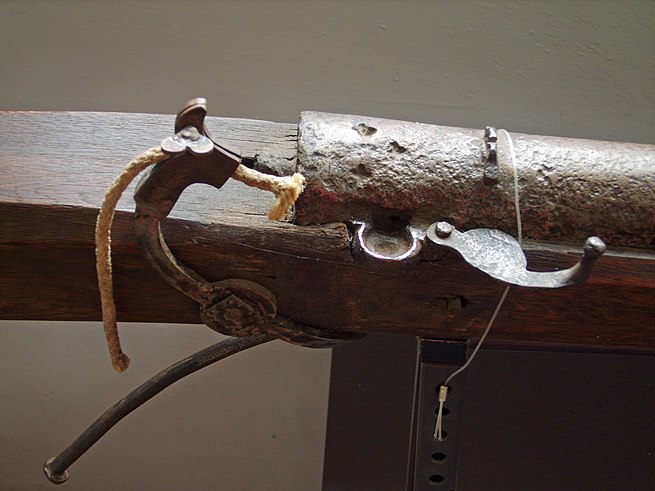Flintlocknoun
An early type of firearm, using a spring-loaded flint to strike sparks into the firing pan.
Flintlocknoun
A lock for a gun or pistol, having a flint fixed in the hammer, which on striking the steel ignites the priming.
Flintlocknoun
A hand firearm fitted with a flintlock; esp., the old-fashioned musket of European and other armies.
Flintlocknoun
a muzzle loader having a flintlock type of gunlock
Flintlocknoun
a gunlock that has flint embedded in the hammer; the flint makes a spark that ignites the charge
Flintlock
Flintlock is a general term for any firearm that uses a flint striking ignition mechanism. The term may also apply to a particular form of the mechanism itself, also known as the true flintlock, that was introduced in the early 17th century, and gradually replaced earlier firearm-ignition technologies, such as the matchlock, the wheellock, and the earlier flintlock mechanisms.
Matchlocknoun
Early type of firearm, using a smoldering piece of cord to fire the powder in the firing pan.
Matchlocknoun
The gunlock used in such a weapon, having a slow smouldering match, see: slow match.
Matchlocknoun
An old form of gunlock containing a match for firing the priming; hence, a musket fired by means of a match.
Matchlocknoun
an early style of musket; had a slow burning wick that could be lowered into a hole in the breech to ignite the charge
Matchlock
The matchlock was the first mechanism invented to facilitate the firing of a hand-held firearm. Before this, firearms (like the hand cannon) had to be fired by applying a lit match (or equivalent) to the priming powder in the flash pan by hand; this had to be done carefully, taking most of the soldier's concentration at the moment of firing, or in some cases required a second soldier to fire the weapon while the first held the weapon steady.






















